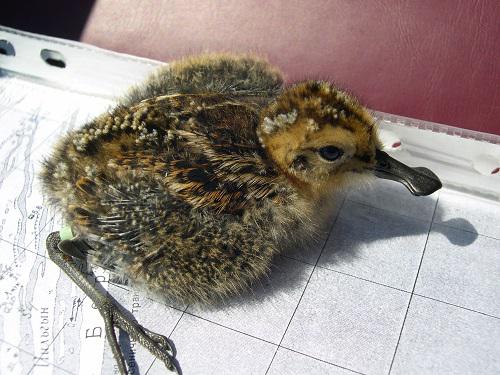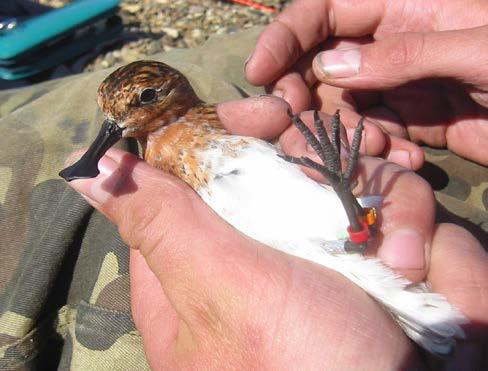Ivan Taldenkov
The project aims to conduct a population monitoring and other conservation-related researches on the endangered Spoon-billed Sandpiper

With its spatulate bill (see photo) the Spoon-billed Sandpiper (Eurynorhynchus pygmeus) is one of the most charismatic wader species. This rare shorebird was recently up-listed to the endangered category in the UICN Red List due to the strong species population decline happened during last decades. Now there are no more than 500 breeding pairs left. This East Asian endemic bird breeds only in tundra of the extreme North-Eastern Russia, where small isolated nesting populations are located in peculiar coastal habitats. Because of the high fidelity to the breeding site (every spring all survived adults return for nesting to the same area) the species population might be effectively monitored at the breeding grounds.

Although the situation with Spoon-billed Sandpiper is critical, conservation priorities are still not drawn up due to poor understanding of causes of the decline. Conducting breeding population monitoring might enlighten these causes. This includes a) the estimation of the population productivity and b) the estimation of adult bird's annual mortality rate. Extremely unsuccessful breeding indicates the problems at the breeding grounds. Conversely, high breeding success accomplished with low rate of adult's survival elicits negative processes on the wintering grounds and stopover sites.
There are two known major breeding populations of Spoon-billed Sandpiper each including more than 5% of species population. One is situated at Northern Koluchinskaya Gulf (northern Chukchi Peninsula) and another is situated near Meinypilgyno village (to the south from Chukchi Peninsula). The intensive research on the species biology started in 1972 and proceeded in 1986-88 at northern population. These studies accomplished with bird's banding made a base for further monitoring and the area was surveyed again in 2002. The southern population was found recently (2001) and many birds were banded here in 2003.
The project aims to conduct a population monitoring and other conservation-related researches on the endangered Spoon-billed Sandpiper for contribution in understanding of the causes of species population number decline and, thus, for developing appropriable species conservation strategy. We cooperate with local conservation organizations and provide lectures for native adults and school children to prevent or minimize human impact on the nesting sandpipers.